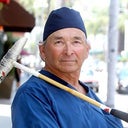I had primary (closed) rhinoplasty 6 months ago as well as a turbinectomy. I'm now having problems breathing as it feels like there is something blocking my nose. I also feel a lot of stretching/pulling/tugging inside. When I look inside, I see bands of skin that seem to be pulling inward (bottom outer area towards the center of the nose). These seem to be getting tighter as my nose heals and with that, it's getting harder to breath. Is this scar tissue easy to remove? How is it done?
Answers (13)
From board-certified doctors and trusted medical professionals
Dr. Michael R. Macdonald, MD

Dr. Michael R. Macdonald, MD
Board Certified Facial Plastic Surgeon
Answer
Dr. Raffy Karamanoukian, MD, FACS

Dr. Raffy Karamanoukian, MD, FACS
Board Certified Plastic Surgeon
Answer
Dr. Eric M. Joseph, MD

Dr. Eric M. Joseph, MD
Board Certified Facial Plastic Surgeon
Answer
Dr. Steven J. Pearlman, MD, FACS

Dr. Steven J. Pearlman, MD, FACS
Board Certified Facial Plastic Surgeon
Answer
Dr. Toby Mayer, MD

Dr. Toby Mayer, MD
Board Certified Facial Plastic Surgeon
Answer
Dr. Amy T. Bandy, DO, FACS

Dr. Amy T. Bandy, DO, FACS
Board Certified Plastic Surgeon
Answer
Dr. Steven Wallach, MD
Dr. Steven Wallach, MD
Board Certified Plastic Surgeon
Answer
Dr. Peter E. Johnson, MD
Dr. Peter E. Johnson, MD
Board Certified Plastic Surgeon
Answer
Dr. Jeffrey Scott, MD
Dr. Jeffrey Scott, MD
Board Certified Plastic Surgeon
Answer
More Rhinoplasty Questions
See all Rhinoplasty Q&AWE SEND PRETTY
EMAILS
What’s trending? Who’s turning heads? Which TikTok myths need busting? We’ve got you. No fluff, no gatekeeping—just real talk. Get our free, unfiltered newsletter.